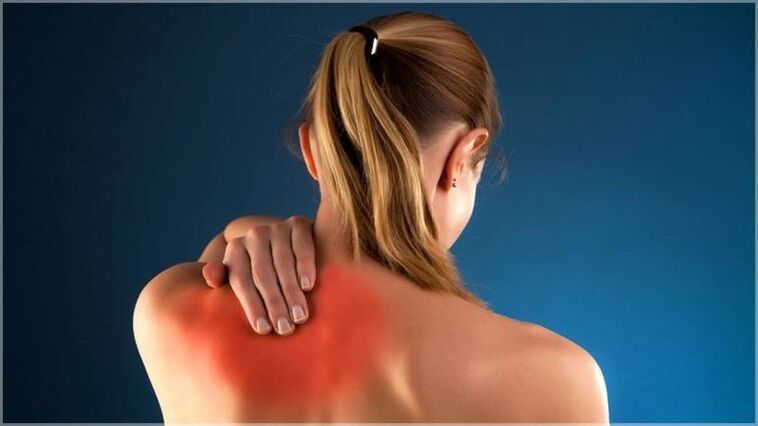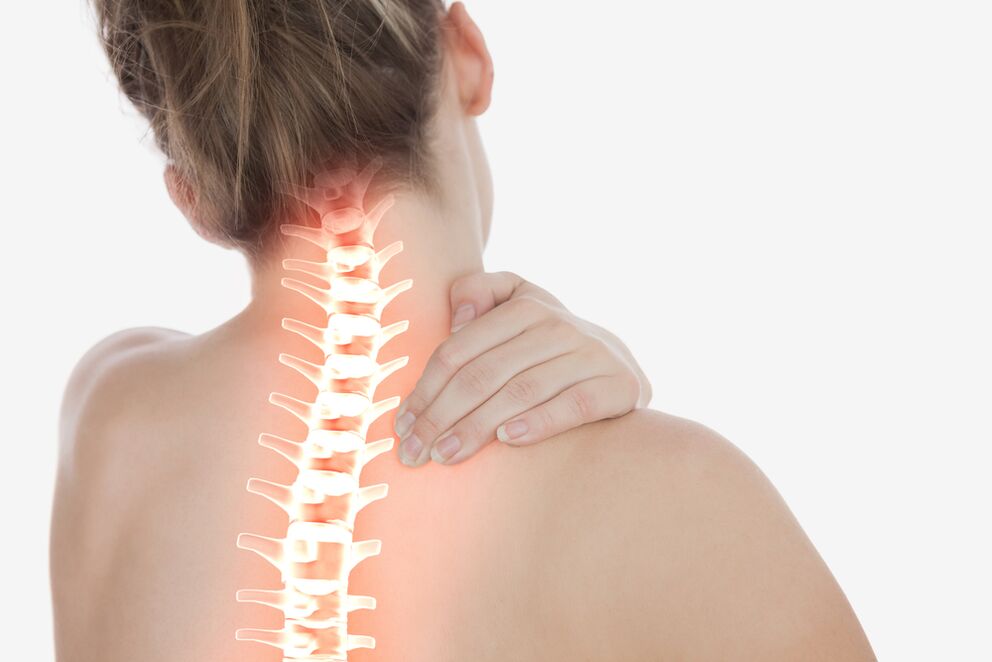Column disease in our time is considered a serious medical and social problem. Each 30 -year -old person suffers from several vertebrates. Osteochondrosis is diagnosed in 70% of the population capable of elderly.
What is osteochondrosis?

Osteochondrosis is a chronic neurological disease. From the Greek language, this term translates as osteo - bone and condres - cartilage.
As a result of the pathological destruction of tissues, their elasticity and loss of the original form are reduced. The distance between the vertebrae is reduced and the spine is deprived of a stable balance. Distinguish between lumbar, thoracic and cervical osteochondrosis.
In relation to the weakening of intervertebral discs in the body, irreversible pathological processes can begin to develop. With a late treatment, this process can lead to a vertebral hernia and a protuberance. In addition, the degradation of the spinal column and intervertebral ligaments can occur. All these processes lead to the formation of bone processes: osteophytes.
Causes of the disease
Osteochondrosis develops according to a series of factors that depend and do not depend on a person. The main reasons are found in the following:
- The causes of the deviation in the intervertebral sections are an asymmetric job of the muscles. This happens in cases of inappropriate heat before the exercises, uncomfortable postures, when heavy bags are used, an inappropriate position in a dream and use mattresses or pillows too soft.
- Often, the causes of osteochondrosis can be the flat feet of the legs. At the same time, foot disease does not provide adequate depreciation during interaction with support and all the load to go to intervertebral columns.
- People with excessive body of the body often face the problems of the spine. This is due to the fact that fat deposits are distributed in various parts of the body and axis of the spine, without supporting excessive load, begins to deform. The intervertebral joints take care of all excess mass and overload over time.
- The cases of disease development are very frequent at the bottom of several back lesions, overloads of a dynamic and statistical nature, regular vibrations in the vertebral axis. In addition, the greater a person becomes, the more often it is subject to such manifestations.
- The curvature of the column is the undoubted cause of the development of osteochondrosis. Such pathology can develop both in early childhood and in a later age. In school years, most people acquire certain deviations related to the spine. At a later age, these manifestations are poured into a chronic disease.
In addition to the above reasons, the following can be distinguished:
- hereditary predisposition;
- smoking;
- poisoning or infectious disease;
- acute cessation of strong physical effort in the gym;
- lower nutrition;
- changes associated with age;
- posture in posture during pregnancy;
- adverse environmental conditions.
Symptoms of osteochondrosis
The main symptoms in the disease can be called back on the back and neck. The severity of symptoms depends on the severity and stage of the disease. Osteochondrosis has an extensive clinical image. This is due to the fact that the location of the intervertebral discs is violated, hernias are formed, growths are formed in the vertebrae. All this leads to a deteriorated blood supply, nerve pinch, a malfunction in the spinal cord and the appearance of surrounding vertebrates fibrosis.
With the development of osteochondrosis, the following symptoms begin to appear:
- A traction or pulsating pain appears in the neck, neck, lower back;
- Muscle weakness feels;
- When the head turns, crusts are heard;
- Periodic and dizziness and dizziness pains arise;
- A person feels unexpected fatigue of usual routine affairs, which over time flows to a chronic;
- They feel numbness of the extremities, their pain and chills;
- The sensitivity is disturbed;
- Muscle hypotension develops;
- Body fatigue, including eye.
Depending on the area of the spine that the osteochondrosis is hit, the symptoms may vary. With cervical osteochondrosis, pain is felt in the hands and shoulders, the head begins to dizzy, the "flies" appear periodically in front of the eyes. The lesion of the thoracic region leads to pain in the chest and the region of the heart. The lumbar region declares pain in the lower back, which are given to pelvic legs or organs.

With late treatment, the following disorders may appear:
- spinal hernia;
- kyphosis;
- outgoing;
- Radiculitis;
- Salt deposits in space between vertebrae;
- spinal cord career;
- extremities atrophy;
- Leg paralysis.
Osteochondrosis treatment
Osteochondrosis is treated with a fairly long period of time, approximately three months more annual rehabilitation. The auto -medical can make the patient's condition worse and can take more time for treatment and recovery.
Therapeutic procedures are carried out in two areas: conservative therapy and surgical intervention are used. In addition, the corresponding diet is prescribed to the patient and general recommendations are provided to maintain their health.
During conservative treatment, it is the objective of stopping pain syndrome, normalizing the spine and avoiding more distribution changes in the "axis" of a person. It is carried out through the following methods:
Drug therapy
Aimed at eliminating pain syndrome and preventing inflammation of the components of the spine. At the same time, the objective is to improve the work of metabolic processes.
The following medications are prescribed:
- Non -steroidal anti -inflammatory.
- Antispasmodics.
- Antioxidants
- Improvement of blood microcirculation.
Osteochondrosis medications can be used as tablets, ointments, gels and injections. Ointments based on bees and snake poison have good reviews. Famous anesthetical ointments can be used without a medical recipe to relieve muscle pain.
The ointments are used both during the period of pain exacerbation and for the prevention of osteochondrosis.
To stop pain and stop inflammation, several therapeutic blockages are also used. They help reduce muscle tonic syndrome. Among these blockages, is the application:
- trigger points block;
- Inside the bone;
- paravertebral;
- Epidural
Physiotherapy
The procedure is necessary to relieve severe pain in the column area and near the adjacent organs. It is prescribed during the period of pharmacological therapy and in the rehabilitation period to improve its effectiveness.
Physiotherapy is carried out using the following means:
- Ultrasonic effects in the column;
- laser treatment;
- Magnetically - Resonance therapy;
- The use of low frequency currents.
Physiotherapy Physical Education (Exercise Therapy), Kines Butapy
This type of treatment is selected individually depending on the seriousness of the processes that proceed, its stages and the patient's age. The exercises are selected and carefully. The purpose of such exercises is to correct the posture, normalize the work of muscle tissues, their flexibility. At the same time, the decompression of nerve roots is exposed and the prevention of possible complications is carried out.
The procedure allows you to normalize the metabolism and nutrition of intervertebral discs, improves blood circulation, restores the distance of discs and vertebrae, allows you to uniformly distribute the load throughout the support and motor device.
In addition, the following procedures have a good restorative effect:
- Massage. It helps improve blood circulation, relieve stiffness and muscles tension, as well as improve the general body and patient's health condition.
- Hydromassage. El efecto es lo mismo que de la terapia de masaje, solo el trabajo de todo el sistema nervioso aún está mejorando.
- Manual therapyEl impacto va a ciertos puntos del sistema de hueso y muscular. Se restaura la actividad motora, se fortalece el sistema inmune y se lleva a cabo la prevención de posibles complicaciones.
- Extensión (tracción) de la columna vertebral. Usando equipos especiales, la columna se corrige. El procedimiento ayuda a eliminar finalmente los ataques de dolor.
Con la ineficacia del tratamiento conservador, se usa la intervención quirúrgica. El método quirúrgico también se prescribe para las lesiones más fuertes de la columna y sus órganos cercanos.

Cualquier tipo de osteocondrosis puede desarrollarse durante muchos años en un lugar de localización. Pero al mismo tiempo, los procesos patológicos pueden formarse en cualquier parte de la columna vertebral. El tratamiento oportuno garantiza un pronóstico favorable y una cura completa de la osteocondrosis.


















